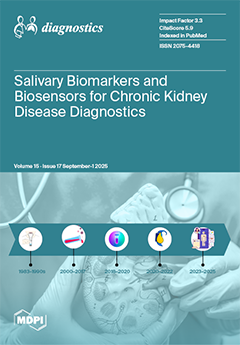Background/Objectives: Different patient-reported outcomes and radiological results are reported depending on whether microfracture, drilling, or nanofracture is utilized in the arthroscopic treatment of talus osteochondral lesions, but the first-line treatment is still controversial. The aim of this study is to evaluate the early patient-reported outcomes of microfracture, nanofracture, and antegrade drilling methods in talus anteromedial osteochondral lesions.
Methods: A total of 77 patients who presented with ankle pain between October 2016 and June 2022, were diagnosed with talus osteochondral lesions, and underwent microfracture (
n: 27), nanofracture (
n: 25), and K-wire drilling (
n: 25) were included. Demographic data of the patients were evaluated, such as age, gender, lesion side, dominant extremity, body mass index (BMI), smoking status, smoking (pack/day-year), and symptom duration. Patient-reported outcomes of the patients were evaluated with VAS (visual analog scale) and AOFAS (American Orthopedic Foot & Ankle Society) scores measured before surgery and at 6 and 12 months after surgery. The results were evaluated at the significance level of
p < 0.05.
Results: There were no statistically significant differences among the microfracture, nanofracture, and drilling groups in terms of age, gender, lesion side, dominant extremity, BMI, smoking, or daily cigarette use (
p = 0.121,
p = 0.852,
p = 0.956,
p = 0.731,
p = 0.881,
p = 0.769,
p = 0.124). Similarly, the mean duration of symptoms did not differ significantly between the groups (
p = 0.336). Although AOFAS and VAS scores significantly improved in all groups (
p = 0.0001), there were no statistically significant differences between the microfracture, nanofracture, and drilling groups at preoperative, 6th-, and 12th-month measuring points. The microfracture group showed a significantly higher AOFAS improvement from preop to 6 months compared to the other groups (
p = 0.012), though no differences were found between nanofracture and drilling or in 12-month changes. VAS percentage changes showed no significant differences among groups at either time point.
Conclusions: All treatment groups had similar baseline characteristics and outcomes, with the microfracture group showing a greater functional improvement at 6 months.
Full article






